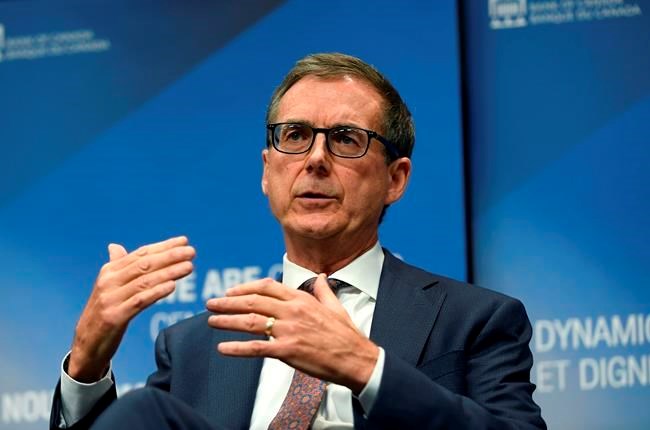The governor of the Bank of Canada made clear Wednesday that higher interest rates are coming to tamp down on inflation, but said businesses also need to do their part by boosting productivity and easing the supply constrains that are helping to push up prices.
Tiff Macklem, speaking virtually at a Canadian Chamber of Commerce, said it is important businesses invest in worker productivity because it creates economic growth without higher inflation rates.
"Productivity growth is vital to non-inflationary growth and rising standards of living. At a time when inflation is already well above our target, this is more vital than ever."
Worker productivity, which measures how much is produced in a set amount of time, needs to go up so that rising wages don't lead to higher unit costs, he said.
"Higher productivity pays for higher wages," he said.
Speaking on a media call after the event, Macklem said that lower productivity growth would mean less supply expansion, which could mean interest rates would have to go up more.
He emphasized though that higher rates are coming either way, both to dampen demand and to head-off expectations that inflation could be a problem beyond the short-term.
The bank projects inflation will run high at close to five per cent for the first half of the year, but expects it to get down to three per cent by the end of 2022. Expectations that inflation could run higher for longer could makes getting it under control crucial, he said.
The bank ended its commitment to hold interest rates at its floor of 0.25 per cent on Jan. 26, opening a path to raising rates at its next scheduled rate decision is March 2.
Macklem's remarks are the clearest sign yet that rates are set to go up.
"There’s no question that Canadians are seeing inflation on a broader set of goods, and that certainly can start to influence their psyche. That’s why it’s been very important for us to get out and signal very clearly that we are not comfortable with where inflation is.
"Inflation is too high and we will be bringing it down.”
Desjardins analyst Royce Mendes said in a note that the governor's unequivocal statement that the economy requires a significant shift in monetary policy means an increase should be expected in the near-term.
"This signal all but clears the way for a rate hike in March, despite the labour market’s slide in January."
How much and how quickly rates rise from there will depend on a variety of factors, but Macklem made it clear that business investment is one of them.
He noted that Canada has long lagged the U.S. in business investment, including in information and communication technology that plays an important role in driving productivity growth.
There are signs of increased spending on the way though. The Bank's most recent business outlook survey showed 62 per cent of firms plan to spend more on machinery and equipment in the year ahead than last year, the highest level since the survey was introduced in 1999.
Indications are that business investment will grow faster in Canada than in the U.S., as long as businesses actually go ahead with that spending, said Macklem.
"It’s imperative that businesses in Canada follow through on these plans or risk losing out to U.S. competitors."
He says businesses will also need to lean into the flexible and remote working arrangements created by the pandemic to allow access to a wider labour pool, while workers will also need to be prepared to keep their skills fresh.
This report by The Canadian Press was first published Feb. 9, 2022.
Ian Bickis, The Canadian Press



